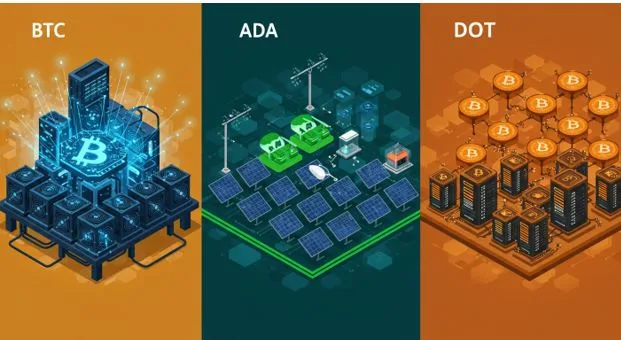The Modern Way to Mail: How to Seamlessly Send Letters Online
In today’s fast-paced digital world, many businesses and individuals are rethinking how they handle traditional communication. While email and instant messaging dominate our daily interactions, physical letters still hold an important place in both personal and professional contexts. From legal notices and contracts to personalized customer communications, letters remain a powerful medium. However, the traditional process of printing, addressing, and posting a letter is time-consuming, prone to errors, and often inefficient.
That’s where online mailing services come into play. They combine the reliability of postal mail with the convenience of digital tools, making it possible to handle everything from your computer or even your smartphone. In this article, we’ll explore why sending letters online has become a smart choice, how it works, and how businesses can benefit from embracing this modern approach.
Why Traditional Mailing is Becoming Outdated
For decades, businesses have relied on conventional methods to send important documents, bills, invoices, or contracts. While effective, the process has drawbacks:
- Time-Consuming – Printing, folding, inserting into envelopes, labeling, and finally going to the post office can eat up hours of productive time.
- High Costs – Paper, ink, envelopes, postage, and labor all add up. For companies sending hundreds or thousands of letters monthly, the expenses can be significant.
- Lack of Tracking – Traditional letters often lack the ability to track progress in real-time, which can be critical for sensitive or urgent communications.
- Environmental Impact – Manual mailing often results in wasted materials and carbon emissions from transport.
While physical letters are still essential in many situations, the inefficiencies of traditional mailing methods have motivated businesses to look for alternatives.
The Digital Shift in Mailing Letters
With the rise of cloud-based platforms, digital transformation has entered every area of business operations—including mail. Instead of manually printing and posting, businesses now have the option to send letter online with just a few clicks.
This process involves uploading your document to a secure platform, entering the recipient’s details, and choosing your mailing preferences. The provider takes care of the rest: printing, sorting, stamping, and delivering the letter via the postal service.
The result? Businesses and individuals save time, reduce costs, and eliminate the hassle of physical mailing, while still ensuring their recipients receive professional, high-quality letters through traditional mail channels.
How Online Mailing Works
Most online letter mailing platforms operate with a simple three-step process:
- Upload Your Letter – You can upload a document in PDF, Word, or other formats. Some platforms even allow you to compose the letter directly in their editor.
- Enter Recipient Details – Whether it’s one address or thousands of recipients, you just provide the necessary mailing details. Some services integrate with CRMs or databases to automate this step.
- Send and Track – Once you confirm, the platform prints, folds, inserts, and mails the letter on your behalf. Many providers also allow you to track delivery progress in real time.
This process makes it just as easy to send one-off personal letters as it is to manage bulk business mail campaigns.
Benefits of Mailing a Letter Online
Switching from traditional mail to an online service provides numerous advantages. Let’s break them down:
1. Time Savings
Employees no longer need to spend hours on manual tasks like printing, folding, and mailing. This frees up valuable time to focus on core business activities.
2. Cost Efficiency
When you mail a letter online, you eliminate hidden costs such as paper supplies, printer maintenance, and postage trips. For bulk mailing, online platforms often negotiate better postal rates.
3. Professional Presentation
High-quality printing, standardized formats, and error-free addressing ensure that every letter looks professional and consistent.
4. Security and Compliance
Reputable providers follow strict data security standards and comply with regulations, making them suitable for sensitive documents like financial statements or healthcare communications.
5. Scalability
From one letter to thousands, the process scales effortlessly without additional overhead.
6. Eco-Friendly
By centralizing and streamlining mailing operations, online platforms help reduce unnecessary waste and carbon emissions.
Common Use Cases for Sending Letters Online
The ability to send letter online is useful across industries and scenarios. Some of the most common applications include:
- Business Correspondence – Sending contracts, invoices, and official communications quickly and efficiently.
- Marketing Campaigns – Delivering personalized offers, reminders, or promotions to targeted customers.
- Legal Documents – Ensuring compliance and traceability for notices, agreements, and confidential letters.
- Healthcare and Finance – Securely mailing statements, updates, and confidential client communications.
- Personal Letters – For individuals who want to send a personal, heartfelt letter without the hassle of manual posting.
Why Businesses are Switching to Online Letter Mailing
Companies of all sizes are recognizing that mailing letters online is not just a convenience—it’s a competitive advantage. Here’s why:
- Faster Customer Communication – Deliver urgent messages without delays.
- Improved Customer Experience – Provide reliable, professional correspondence that builds trust.
- Operational Efficiency – Automate mailing tasks to cut down on administrative workload.
- Cost Predictability – Move from variable mailing expenses to predictable, transparent pricing.
In a world where customer relationships and compliance are key, businesses can no longer afford the inefficiencies of manual mail.
Choosing the Right Online Mailing Solution
Not all services are created equal. When selecting a platform to manage your mailing needs, look for the following features:
- Ease of Use – A user-friendly interface that allows anyone to send letters with minimal training.
- Integration Options – Compatibility with your existing CRM, accounting software, or databases.
- Security Standards – End-to-end encryption, GDPR compliance, and data protection policies.
- Scalability – Ability to handle both one-off letters and large-scale campaigns.
- Tracking and Reporting – Transparency into where your letters are and when they arrive.
Choosing a trusted provider ensures that you not only save time and money but also maintain the integrity and professionalism of your communication.
The Future of Mailing: Hybrid Communication
Even with digital transformation, physical letters are unlikely to disappear entirely. Instead, businesses are moving toward hybrid communication models that blend digital convenience with traditional reliability. Online mailing platforms represent this hybrid approach perfectly: you create and manage letters digitally while ensuring they are delivered physically through postal channels.
This approach respects the importance of physical mail while embracing efficiency, automation, and cost control.
Final Thoughts
The process of mailing letters has come a long way from the days of handwritten notes and manual posting. Today, businesses and individuals can harness technology to streamline communication without compromising on professionalism or reliability.
By choosing to send letter online, you unlock efficiency, scalability, and convenience while still leveraging the impact of physical correspondence. Whether you are a business sending thousands of customer statements or an individual mailing a personal message, online letter mailing is the smarter, faster, and more cost-effective solution.
In the end, modern communication isn’t about replacing old methods entirely—it’s about enhancing them. With online mailing platforms, you get the best of both worlds: digital convenience paired with the trusted reach of postal delivery.




